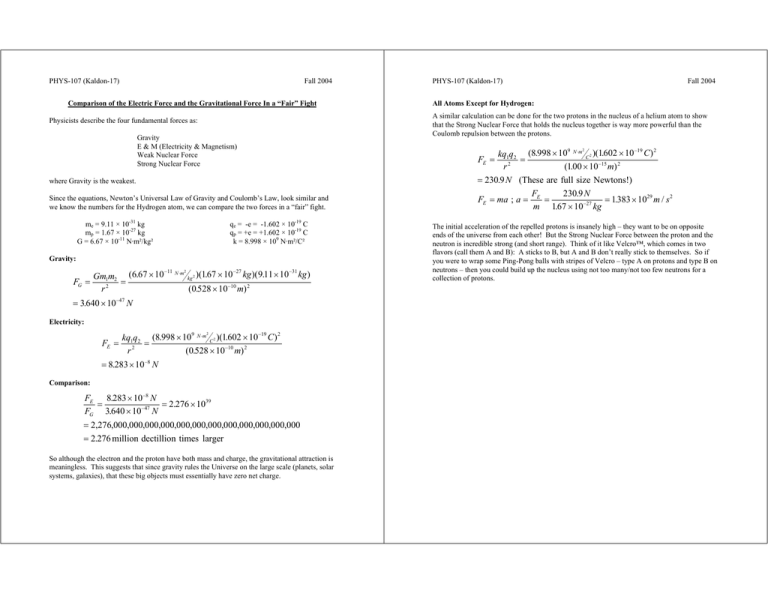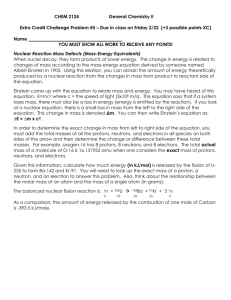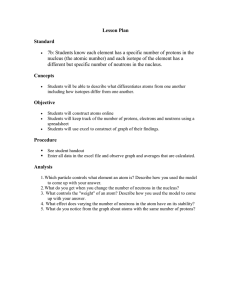F Gm m r kg kg m N = = ´ ´ ´ ´ = ´ 667 10 167 10 911 10 0528 10
advertisement

PHYS-107 (Kaldon-17) Fall 2004 Comparison of the Electric Force and the Gravitational Force In a “Fair” Fight Physicists describe the four fundamental forces as: Gravity E & M (Electricity & Magnetism) Weak Nuclear Force Strong Nuclear Force where Gravity is the weakest. Since the equations, Newton’s Universal Law of Gravity and Coulomb’s Law, look similar and we know the numbers for the Hydrogen atom, we can compare the two forces in a “fair” fight. me = 9.11 × 10-31 kg mp = 1.67 × 10-27 kg G = 6.67 × 10-11 N·m²/kg² qe = -e = -1.602 × 10-19 C qp = +e = +1.602 × 10-19 C k = 8.998 × 109 N·m²/C² Gravity: -11 . ´ 10-27 kg )(9.11 ´ 10-31 kg ) Gm1m2 (6.67 ´ 10 N ×m kg 2 )(167 = (0.528 ´ 10-10 m) 2 r2 2 FG = = 3.640 ´ 10-47 N Electricity: 9 -19 2 kq1q2 (8.998 ´ 10 N ×m C 2 )(1.602 ´ 10 C ) = (0.528 ´ 10-10 m) 2 r2 2 FE = = 8.283 ´ 10-8 N Comparison: FE 8.283 ´ 10-8 N = = 2.276 ´ 1039 FG 3.640 ´ 10-47 N = 2,276,000,000,000,000,000,000,000,000,000,000,000,000 = 2.276 million dectillion times larger So although the electron and the proton have both mass and charge, the gravitational attraction is meaningless. This suggests that since gravity rules the Universe on the large scale (planets, solar systems, galaxies), that these big objects must essentially have zero net charge. PHYS-107 (Kaldon-17) Fall 2004 All Atoms Except for Hydrogen: A similar calculation can be done for the two protons in the nucleus of a helium atom to show that the Strong Nuclear Force that holds the nucleus together is way more powerful than the Coulomb repulsion between the protons. 9 . ´ 10-19 C ) 2 kq1q2 (8.998 ´ 10 N ×m C 2 )(1602 = 2 2 -15 (100 . ´ 10 m) r = 230.9 N (These are full size Newtons!) 230.9 N F . FE = ma ; a = E = = 1383 ´ 1029 m / s 2 m 1.67 ´ 10-27 kg 2 FE = The initial acceleration of the repelled protons is insanely high – they want to be on opposite ends of the universe from each other! But the Strong Nuclear Force between the proton and the neutron is incredible strong (and short range). Think of it like Velcro™, which comes in two flavors (call them A and B): A sticks to B, but A and B don’t really stick to themselves. So if you were to wrap some Ping-Pong balls with stripes of Velcro – type A on protons and type B on neutrons – then you could build up the nucleus using not too many/not too few neutrons for a collection of protons.





